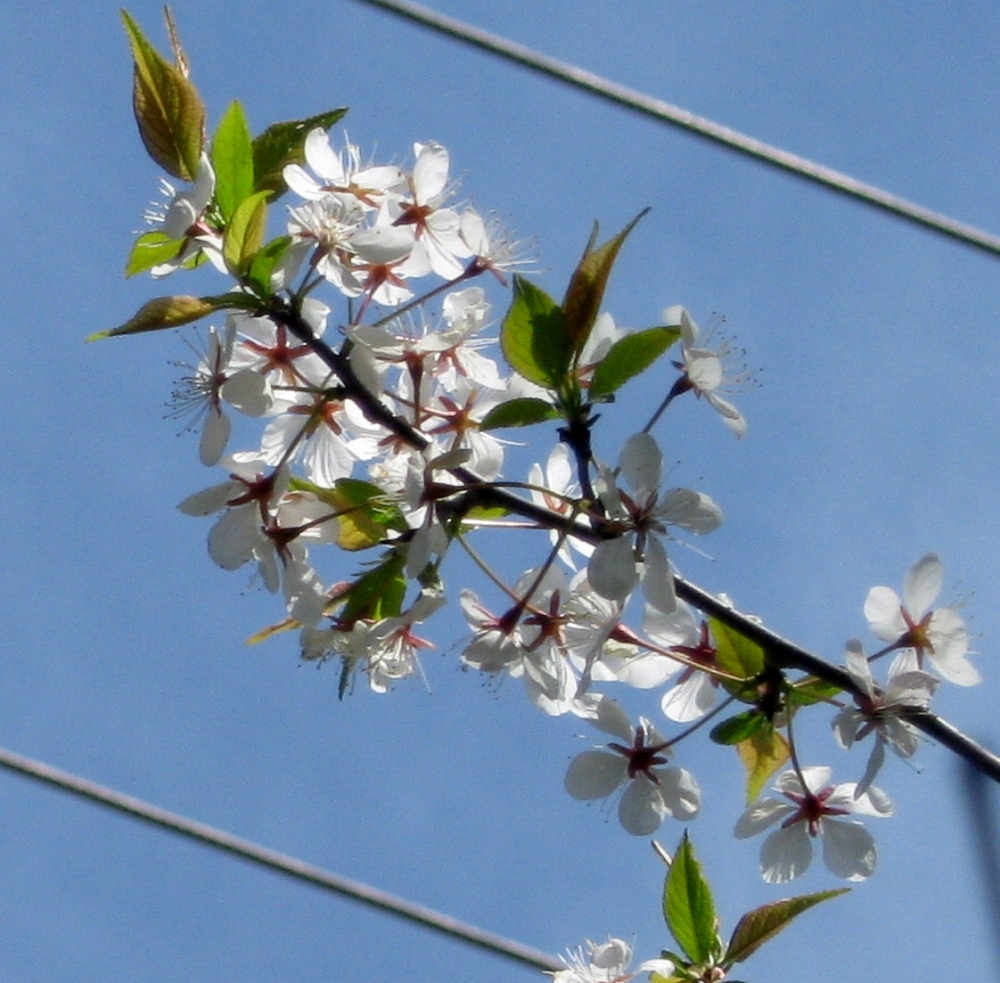Now that May has come and almost gone, we can safely say spring has arrived, even if in about a week it will suddenly have transformed into summer.
But across two or three weeks here in central Maine, spring jumps out suddenly like flowers on a shrub. In fact, May is almost literally a flower. Stems and buds redden, and a sort of supernatural apparition unfolds in the woods. Several whispering shades of green emerge, and for a moment in the middle of the month those soft jades and olives flood hills and roadsides. Then, blossoms unfold.
The directest sign that the world — at least the one I live in — is teetering into that perennial delirium is the appearance of shadbush blossoms. The trees are mostly gangly branched creatures 8 or 10 feet high leaning after sunlight, and aren’t really noticeable any other time of year. But their early leaves have a brick-red fringe and an evening-yellow duskiness, and on that background appear star-shaped white flowers of five widely spaced petals each. It’s called shadbush or shadblow because its blossom time is about the same as when the shad, a kind of herring, run up rivers to spawn. It’s also called juneberry or serviceberry, and is of the rose family.
A rose by any other name — like wild strawberry which has been slow to blossom this year at our house, or crabapple, hawthorn or chokecherry who all throw out flowers now too — is equally sweet, but the shadbush blossoms in my lexicon stand for the first mid-May my wife and I spent together. That was true madness, it seemed to me then and every spring since, because every pastel green place I looked, I thought I saw her face, especially in the shadblossoms.
Once you know what to look for, it’s suddenly everywhere.
I still see it now. In spring everything young becomes oblivious to everything except the way it produces itself. Nature unfolds the life force into visible shapes. The flowers of shadbush, lilacs, rhododendrons, and then the honeysuckle and every other force, appear to crystallize out of something invisible, like drops of water taking form out of the morning air on spider webs, or like time-lapse video of clouds boiling from empty sky.
The unfoldment of May has a headlong momentum of its own that gives it the feel of a living, breathing being. In ages past in Europe the whole phenomenon of spring, and in turn the motion into summer, fall and the death and dormancy of winter, was understood to be a white goddess who each year revealed herself in blossoms, especially on trees and shrubs. Not a person, but an overwhelming force that crystallized out of the green and the people and everything else. For a fleeting moment around the Flower Moon there was no difference between who they loved and spring herself, and out of it came May Day and poetry. The whole north slope of Mount Harris in Dixmont turned soft green a week or so ago and then, when the shadbushes blossomed, unfolded into the air and sky and everywhere else.
Or so it seemed to me. You live like who you are in this green. We call it simply “spring,” but even when it had different names in eons past it was still the same headlong perfection of life run amok. The forces in the trees speak in flowers. The ancient ollaves and bards expressed the same forces in poetry, which (we might recall) Poe defined as, “The Rhythmical Creation of Beauty.”
A force that you become every time it dazzles you there in the green and you say so.
Dana Wilde lives in Troy. His writings on birds, bugs and other conditions of the Maine woods are collected in “The Other End of the Driveway,” available online or by writing to him at naturalist@dwildepress.net. Backyard Naturalist appears the second and fourth Thursdays each month.
Send questions/comments to the editors.




Comments are no longer available on this story